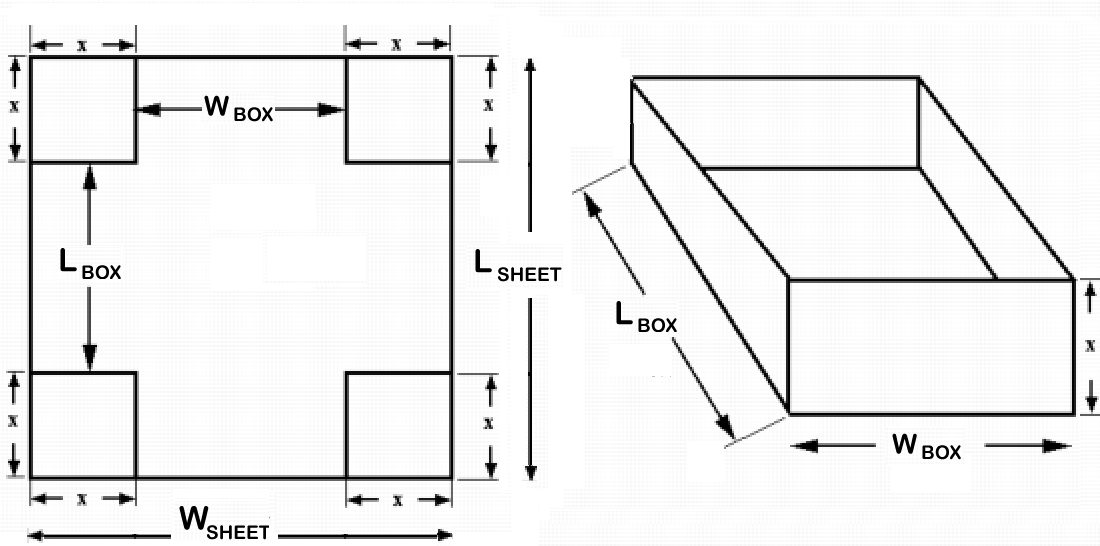Question #05570
1 Answer
The associated max volume is given by:
# \ \ \ \ \ V = 4x^3-32x^2+60x#
# :. V=32.8# cubic inches
Explanation:

Let us set up the following variables:
# {(w, "Width of the Box (in)"), (l, "Length of the Box (in)"), (x, "Length of the Corner Cut-out (in)"), (V, "Volume of the Box (cubic in)") :} #
We want to vary the corner length
The dimensions of the sheet are 6" by 10", hence, wlog taking
Width:
#x+w+x=6 \ \ => w=6-2x = 2(3-x)#
Length:#x+l+x=10 => l=10-2x = 2(5-x)#
Then the volume is given by:
# \ \ \ \ \ V=wlx#
# :. V = 2(3-x)2(5-x)x #
# :. V = 4x(x^2-8x+15)#
# :. V = 4x^3-32x^2+60x#
Differentiating wrt
# :. (dV)/dx=12x^2-64x+60 #
At a critical point,
# :. 12x^2-64x+60 = 0 #
# :. 3x^2-16x+15 = 0 #
To solve this quadratic I will complete the square:
# x^2-16/3x+5 = 0 #
# :. (x-16/6)^2-(16/6)^2+5 = 0 #
# :. (x-16/6)^2= 256/36-5 #
# :. (x-16/6)^2= 19/9 #
# :. x-16/6= +-sqrt(19)/3 #
# :. x= 16/6+-sqrt(19)/3 #
# :. x = 1/3(8+-sqrt(19)) #
# :. x=1.214, 4.120 # (3dp)
We should check while value leads to a maximum volume
# :. (d^2V)/dx^2=24x-64 #
# x = 1/3(8-sqrt(19)) => (d^2V)/dx^2 < 0 => max#
# x = 1/3(8+sqrt(19)) => (d^2V)/dx^2 > 0 => min#
graph{4x^3-32x^2+60x [-5, 5, -30, 40]}
Hopefully you can visually confirm the above #

